|
-
27th December 08, 12:35 AM
#51
James Berry - 79th New York Highlanders in the spring of 1861

-
-
27th December 08, 12:42 PM
#52
On the role of the Scouts in polar exploration, these c. 1921 images of Patrol Leader James Marr appear (see article for sources):
Nine of the ten boys interviewed by Sir Ernest Shackleton
(left, foreground). James Marr is in his kilt, obscuring one
of the other Scouts.
 The Prince of Wales with Marr
The Prince of Wales with Marr
 Cigarette Card
Cigarette Card
Regards,
Rex.
At any moment you must be prepared to give up who you are today for who you could become tomorrow.
-
-
27th December 08, 01:43 PM
#53
From a site describing ostensibly the history of the Irish Kilt:
I n 1900 Padraig Pearse (who in 1916 read the declaration of Irish Independence and was shot a few days later) was asked to suggest a "National" dress. In his reply he said "Frankly, I would much prefer to see you arrayed in a kilt . . . (rather than traditional types of Irish trousers)"
 The illustration shows Pearse's school St Enda's with the boys in kilts. The man overseeing the drill, Con Colbert, was one of those executed in 1916 with Willy Pearse another leading kilt wearer. None of the pupils attending the school in 1916 took part in the Rising. While some former pupils did fight (they would have been young men by the time of the Rebellion), none were killed, though many were sent to prison as a result of their involvement.
The illustration shows Pearse's school St Enda's with the boys in kilts. The man overseeing the drill, Con Colbert, was one of those executed in 1916 with Willy Pearse another leading kilt wearer. None of the pupils attending the school in 1916 took part in the Rising. While some former pupils did fight (they would have been young men by the time of the Rebellion), none were killed, though many were sent to prison as a result of their involvement.
Regards,
Rex.
At any moment you must be prepared to give up who you are today for who you could become tomorrow.
-
-
27th December 08, 01:58 PM
#54
I posted this one before - thought I had already put it here, but I guess not:
From a memorial page on a web site about the history and people of Kinnethmont, a parish in Aberdeenshire, Scotland:
On 6th December the 6th Gordons, in 7th Division - 20th Brigade became
the first 51st HD battalion to arrive on The Western Front joining up with
regulars of the 2nd Gordons, Scots and Grenadier Guards in the trenches
in front of Sailly, near Armentieres. Alex's company were the first into the
trenches. Four days in the line and four resting in billets to the rear was the
usual routine. The battalion were billeted south of the town and much time
was spent cleaning up after a tour in the mud swamped trenches.
Members of 6 GH cleaning up after a tour in the trenches,
the man shaving still wears the drab apron over his kilt. This
was worn to camouflage the kilt and to help keep it clean and
dry in the muddy trenches.
The apron has been discussed here before, but I don't recall having yet seen a view of it from the rear. It goes all the way around and loosely pleated.
Somewhere above, there is also an apron that is about the same width as the kilt's apron, too, so looks like there were several versions.
Regards,
Rex.
Last edited by Rex_Tremende; 27th December 08 at 02:05 PM.
At any moment you must be prepared to give up who you are today for who you could become tomorrow.
-
-
27th December 08, 02:04 PM
#55
The Gordon School
The Gordon School was founded in memory of General Gordon, killed at Khartoum in 1885. Set up near Woking in Surrey to provide a sound education for needy boys, the school is now a boarding establishment with army traditions, as instanced by the Victorian-style military dress worn for special occasions.
The picture above, dating from 1956, shows Gordon School pupils Robert Nichols (left) and Reg Millichamp in their parade uniforms. The uniform has not changed to the present day and consists of a dark blue tunic, trews in the Gordon tartan worn and glengarry cap. This was the everyday dress for pupils in earlier times, when the school was known as the Gordon Boys' Home. It was later renamed the Gordon Boys' School and is now the co-educational Gordon School. Regards,
Rex.
At any moment you must be prepared to give up who you are today for who you could become tomorrow.
-
-
27th December 08, 10:26 PM
#56
There are a bunch here from 1927...
http://www.electricscotland.com/gath...heringsndx.htm
including my personal favorite...

Austin Uilleann Pipers' Club
-
-
28th December 08, 12:08 AM
#57

Sorry for the poor quality but this is a picture of my Great-great-grandfather Charles Lamb (1847-1924) of the little mining village of Gorebridge, Scotland. It was taken by a photographer named Murray in the Colony of Natal (now Kwa-Zulu Natal) in South Africa in the mid-to-late 1860s. After his service with the regiment, he returned to Gorebridge and married my Great-great-grandmother Marion Richardson of the neighboring mining village of Newton Grange. Soon after their wedding they moved to Western Pennsylvania where he worked as a mining engineer for the rest of his life.
-
-
29th December 08, 07:28 PM
#58
These come by way of The Glasgow Story, an archive of stories and images about - well - Glasgow. Some of these may have been posted at XMTS before, but so far not in this thread. The photos are copyright of the Scottish Jewish Archives Centre and Reproduced with the permission of the Scottish Jewish Archives Centre.
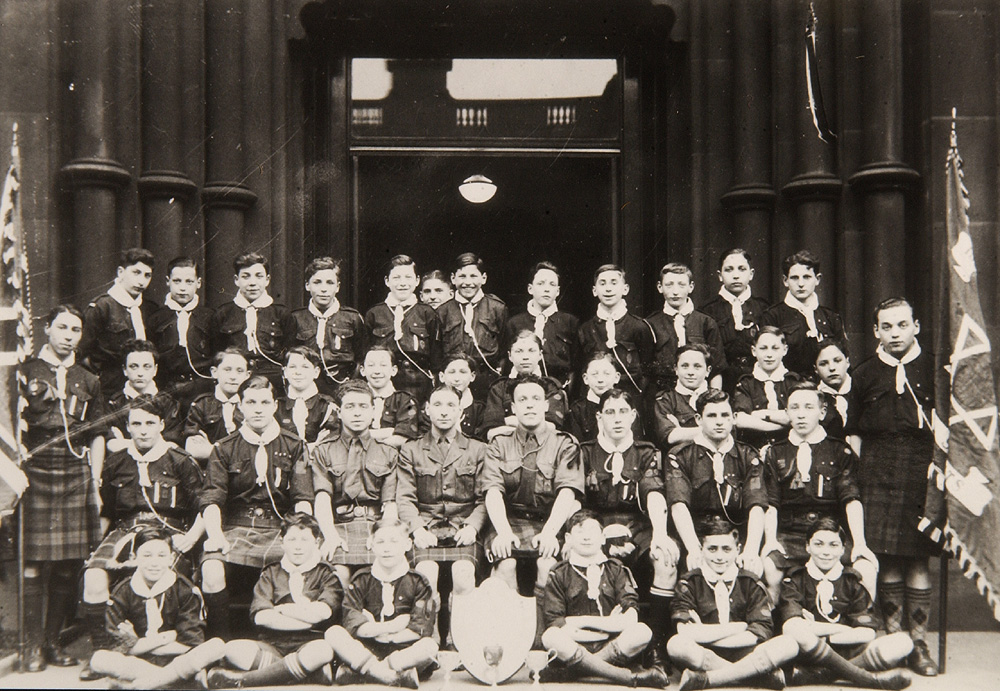 The 155th Boy Scout Group (1st Glasgow Jewish) at Garnethill Synagogue, c 1930s.
The 155th Boy Scout Group (1st Glasgow Jewish) at Garnethill Synagogue, c 1930s.
Many of the boys are wearing kilts as part of their uniforms. To the right, one boy holds the company flag featuring the Star of David just visible on it. The flag on the left appears to be the Union Jack.
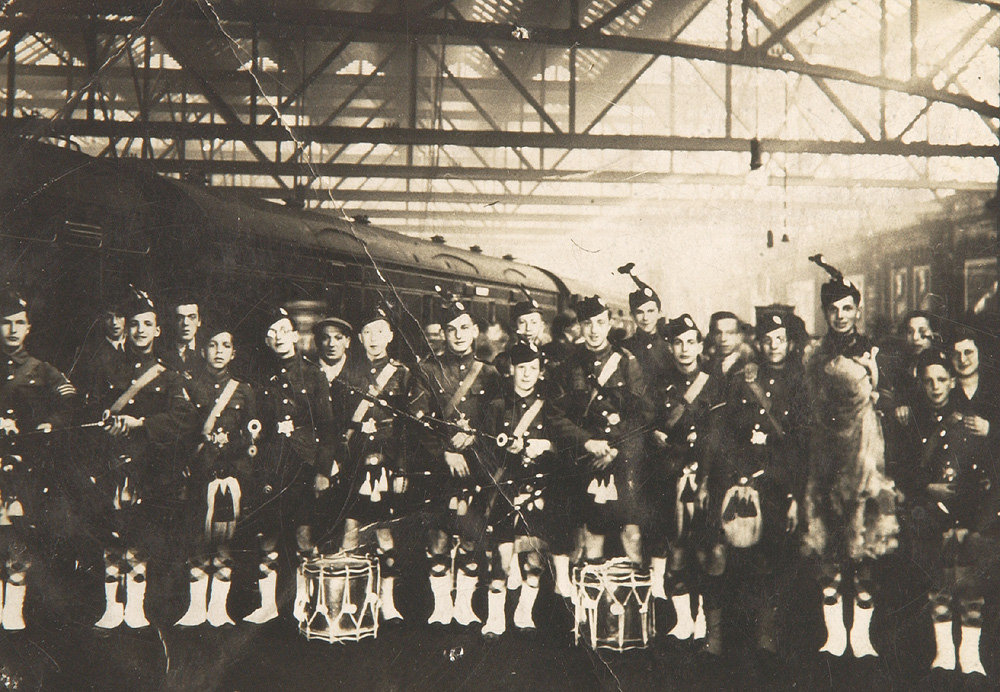 The Jewish Lads' Brigade Band in the 1930s.
The Jewish Lads' Brigade Band in the 1930s.
One major difference between the JLB and other youth groups was the intention that JLB membership would help the children of immigrants integrate themselves into their new surroundings and learn to be good citizens. Accordingly the Glasgow JLB adopted a number of Scottish traditions including establishing what was claimed to be the world's only all-Jewish pipe band.
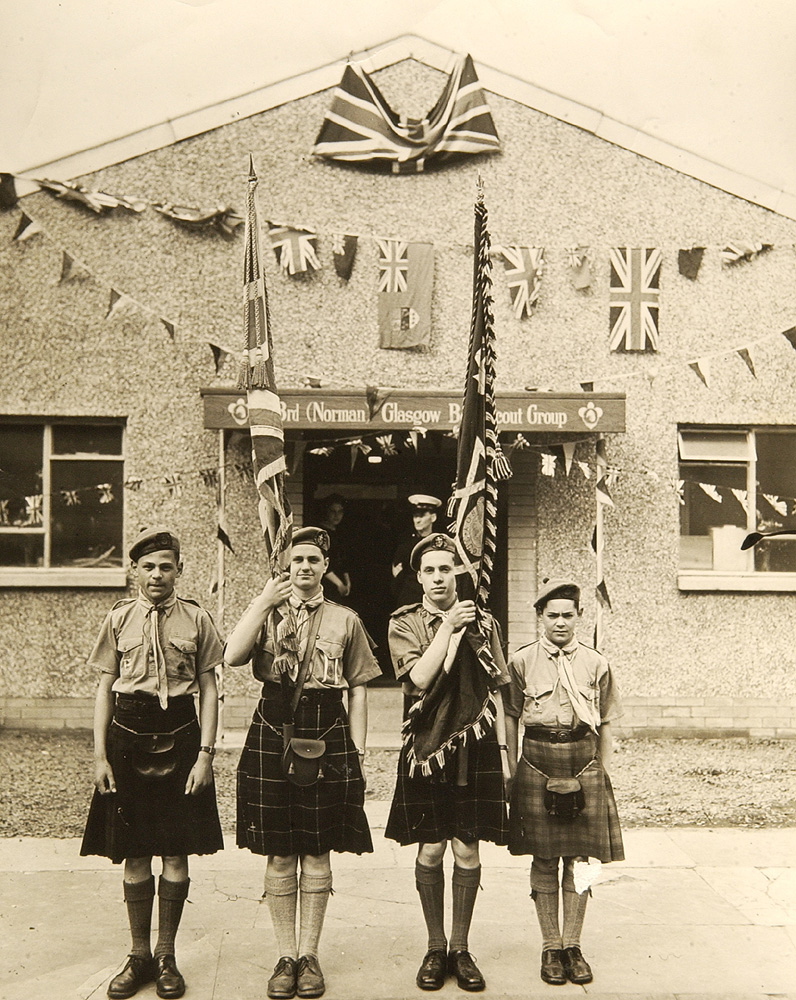 The opening of the Jewish Scout Hall in Queen's Drive on Sunday 1 June 1958.
The opening of the Jewish Scout Hall in Queen's Drive on Sunday 1 June 1958.
The new scout group met at first at Strathbungo School, but raised funds to build its own scout hall. It opened in 1958 on a site in Queen's Drive provided by Glasgow Corporation.
The scout hall closed in 2002 and in 2004 the building is home to Poppins Kindergarten.
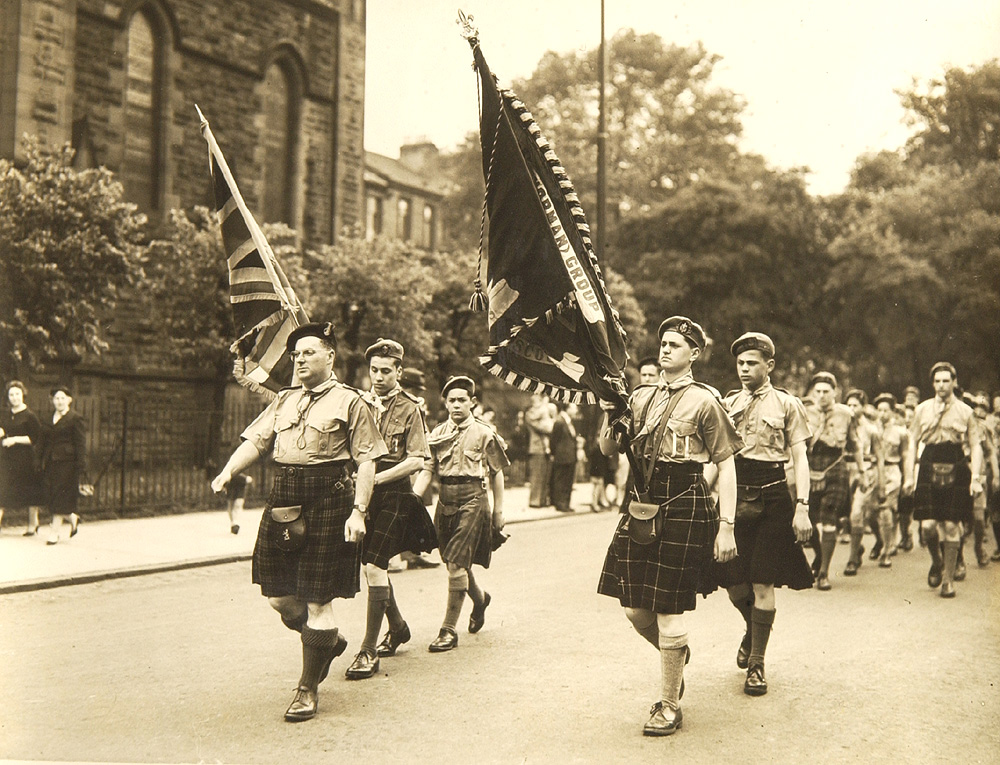 A parade celebrating the opening of the Jewish Scout Hall in Queen's Drive, Sunday 1 June, 1958.
A parade celebrating the opening of the Jewish Scout Hall in Queen's Drive, Sunday 1 June, 1958.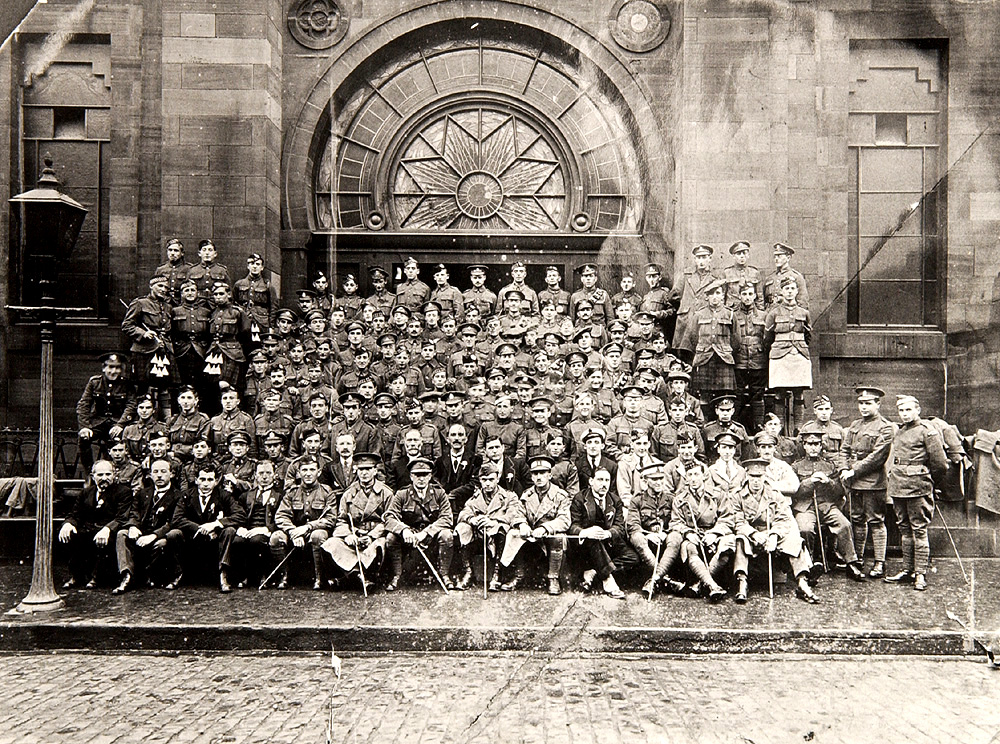 Jewish servicemen outside South Portland Street Synagogue c 1916.
Jewish servicemen outside South Portland Street Synagogue c 1916.
South Portland Street Synagogue opened in 1901 and was the focus of Judaism in the Gorbals.
Regards,
Rex.
Last edited by cessna152towser; 14th May 14 at 01:36 PM.
Reason: Edited by cessna152towser at request of OP.
At any moment you must be prepared to give up who you are today for who you could become tomorrow.
-
-
29th December 08, 07:47 PM
#59
Also by way of The Glasgow Story, have you ever looked around and noticed that, hey, you're the only one in a kilt? Well, it's not as though that's never happened before:
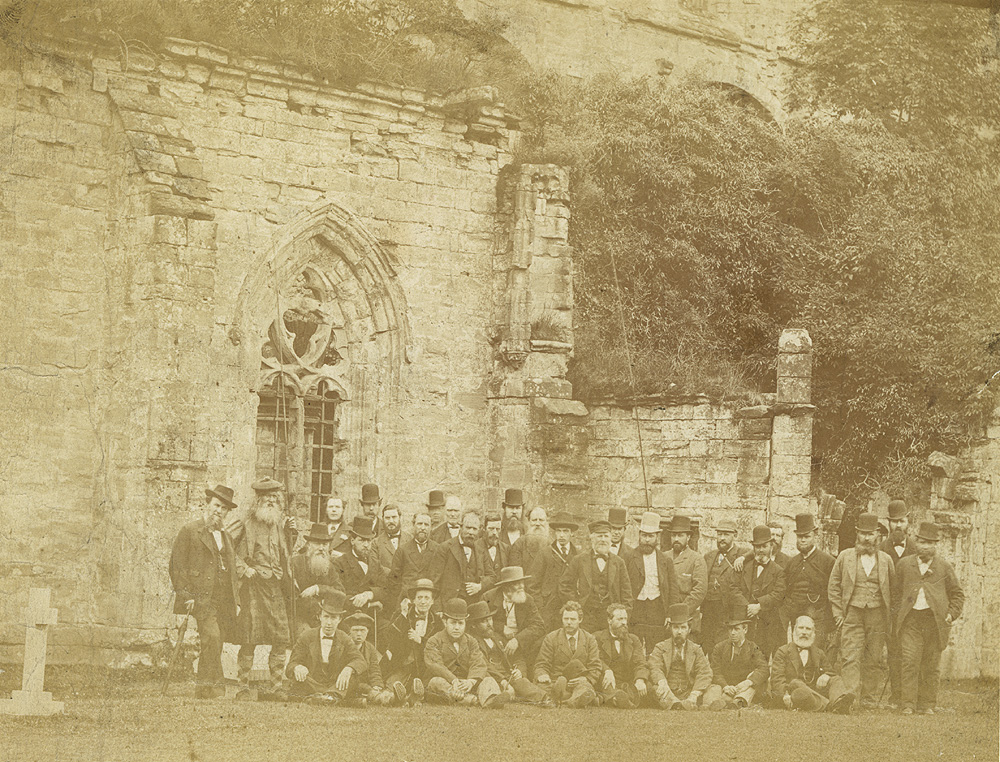 The Glasgow hallkeepers and purveyors trip to Dunkeld on 21 June 1877, photographed by Duncan Brown (1819-1897).
The Glasgow hallkeepers and purveyors trip to Dunkeld on 21 June 1877, photographed by Duncan Brown (1819-1897).
Regards,
Rex.
At any moment you must be prepared to give up who you are today for who you could become tomorrow.
-
-
29th December 08, 07:52 PM
#60
Elephant Station
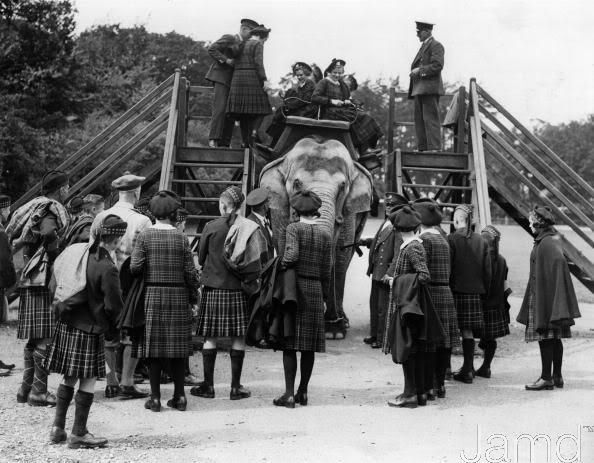 23rd July 1936: A party of children wearing kilts from the Royal Caledonian School
23rd July 1936: A party of children wearing kilts from the Royal Caledonian School
queue up for a ride on an elephant. The elephant is coming into a 'station'
complete with steps and platforms, with its passengers, who sit on bus-style seats.
Regards,
Rex.
At any moment you must be prepared to give up who you are today for who you could become tomorrow.
-
Similar Threads
-
By Big Paul in forum How to Accessorize your Kilt
Replies: 11
Last Post: 3rd October 07, 06:21 PM
-
By angerli in forum General Kilt Talk
Replies: 17
Last Post: 1st February 07, 02:13 PM
-
By cessna152towser in forum Show us your pics
Replies: 3
Last Post: 22nd May 06, 05:25 PM
Tags for this Thread
 Posting Permissions
Posting Permissions
- You may not post new threads
- You may not post replies
- You may not post attachments
- You may not edit your posts
-
Forum Rules
|
|

Bookmarks